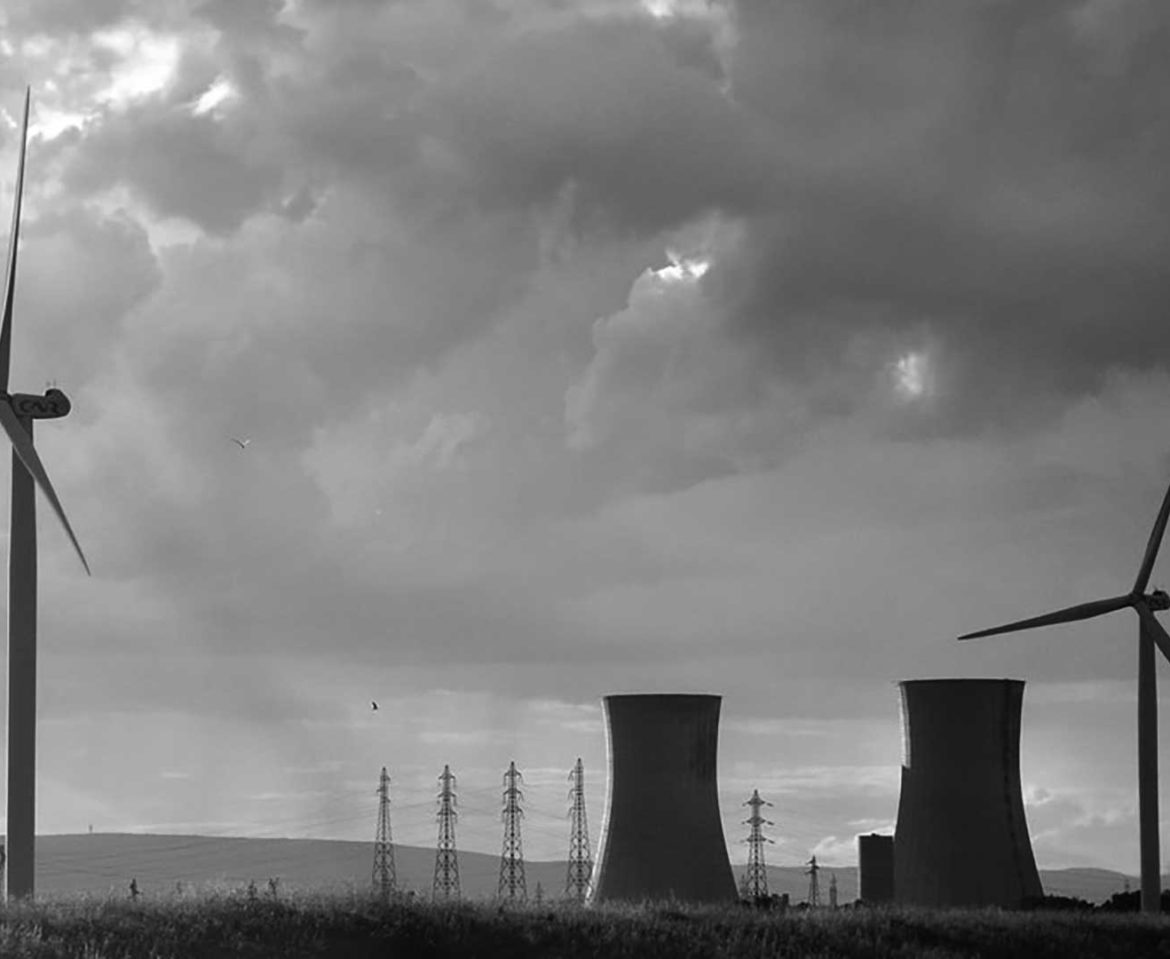Nuclear energy

Introduction
There are plenty of approaches that can lead to sustainable development, while sustainability is one of the most essential practices used in modern urban planning these days. Planet earth is facing many threats due to lack of planning and ignorance of human. One of the biggest threats is the fact that we will reach eventually a stage where energy sources used nowadays will not be sufficient. A study by “EIA & IEA” indicates that the overall consumption of energy in year 2040 will be doubled compared to that in 2010
We have been dependant on earth’s natural resources, such as oil and gas, for energy production for a very long time. Eventually, the need for new resources has emerged. Finding new ways to produce energy and to save on energy consumption has become a must.
Luckily, science has been developing rapidly within the last few decades. It has reached a stage where it can offer alternative solutions that can help human in sustaining the available resources and also using new sources to generate sustainable or even a renewable energy.
Moreover, we as humans are responsible of protecting our planet from the pollution we are causing every day in our lives, which is leading to the climate change that the earth is experiencing. This pressing matter is not only important to achieve a better place to live in, but also to protect our existence on this earth.
In this article, the nuclear power will be the main focus in terms of being sustainable source for energy, and powerful practice with lots of applications. In addition of being an interesting topic to investigate, there are different points of view which are leading to conflicts between scientists and politicians.
According to Michael Burgess “Nuclear power will help provide the electricity that our growing economy needs without increasing emissions. This is truly an environmentally responsible source of energy”. While according to Mark Z. Jacobson “Every dollar spent on nuclear is one less dollar spent on clean renewable energy and one more dollar spent on making the world a comparatively dirtier and a more dangerous place, because nuclear power and nuclear weapons go hand in hand.”

Renewable energy
Nowadays people are more wary of the end of natural energy resources and climate change caused by the common ways of generating power such as oil and natural gas. Some of the countries already curved to relying on renewable energy in many ways and different forms, such as Spain, the United States of America, the United Kingdom, Japan, and France.
Moreover, people themselves should be serious about considering renewable energy as a replacement with all its practices, (wind, solar, hydro electrical, geothermal, and nuclear). They must put more effort into implementing sustainable practices rather than relying on governments and scientists. For example, raising money for experiments, considering solar panels as a source of heat and electricity, and giving the chance for nuclear power to prove itself as a clean source for energy.
According to Bruno Comby “The only clean, safe energy source capable of ensuring the continuation of our industrial civilization while protecting the environment.” Renewable energy is one of the most effective ways to achieve sustainable development. It can be generated in five different forms: electromagnetic, thermal, mechanical, chemical and Nuclear. Each of these methods covers an inclusive scope of outcomes, containing some types of energy conversion within the method, other types of conversion take place between forms (John Blunden, 1996).
Nuclear energy
In 1954 Lewis Straus, chairman of the U.S. atomic energy commission, declaimed that “nuclear power will give us energy too cheap to meter”. However, scientists stated that it is much more complicated than what he wants to make it out to be. In the current century it was identified that indestructible atoms of chemistry are not the last part of the chemical interaction. Nuclear energy is the energy generated by splitting apart the atoms which is the same energy that gives a nuclear bomb its destructive force.
“The positively charged nucleus of the atom, the chemically unchanging part, is now believed to consist of positively charged protons (each balancing an electron’s negative charge, but much heavier) and neutrons (not electrically charged, but of about the same mass as protons) held together by a distinct type of nuclear attractive force. Much energy must be supplied to prise them apart. This can be compared to the way molecules consist of atoms joined by chemical bonds (i.e. electromagnetic effects of electrons outside the nucleus) except that the scale of these effects within the nucleus is about thousand times smaller and the energies required to separate the components are millions of times greater, which is why they were not so readily observed. These large binding energies imply that nuclei are stable, and at first site this does not seem too promising as an energy source. But some nuclei are more stable than others, and the change from a less stable to a more stable form can involve a large energy release.” (John Blunden, 1996). These can be achieved in three different ways: radioactivity, fission or fusion.
Radioactivity
There are several types for nuclear radiation such as alpha, beta particles and Gamma rays.
Fission and Fusion
These are considered as the main sources of nuclear energy, presently nuclear fission is the only method used for energy creation. However, fusion offers much more energy compared to nuclear fission. Energy produced from fusion reaction can be ten times greater than equivalent fission reaction. This is due to the fact that fusion reaction fuses atoms together instead of splitting them apart, similar to what takes place in the sun and stars, which produces cleaner, environmentally friendly, and safer energy source. Although it has been possible to accomplish nuclear fusion in laboratory settings, scientists have been trying to achieve fusion reaction on a large industrial scale for a long time but this has been unsuccessful so far due to the tremendous initial energy cost, they are claiming that they are very close to achieving this goal. Still, we are taking advantage of the natural fusion reaction by using the solar system to generate energy.
Nuclear reactors
Nuclear reactors are structures that controls and contains sustained nuclear chain reactions. Around 10% of the world’s energy comes from nuclear reactors. There are 440 nuclear power plants in total over the world. 99 of them are in the USA, 58 in France, 43 in Japan, 35 In Russia, 35 in China, in addition to other countries such as Spain, Canada, India and others.
Reactors around the world are used mostly for generating electricity, heat, and for industrial purposes. In addition, it is used for producing radiation therapy, cancer treatment, moving aircraft carriers, propulsion of ships, and for conducting research.
“Fuel, made up of heavy atoms that split when they absorb neutrons, is placed into the reactor vessel (basically a large tank) along with a small neutron source. The neutrons start a chain reaction where each atom that splits releases more neutrons that cause other atoms to split. Each time an atom splits, it releases large amounts of energy in the form of heat. The heat is carried out of the reactor by coolant, which is most commonly just plain water. The coolant heats up and goes off to a turbine to spin a generator or drive shaft” (Nick Touran, 2016).
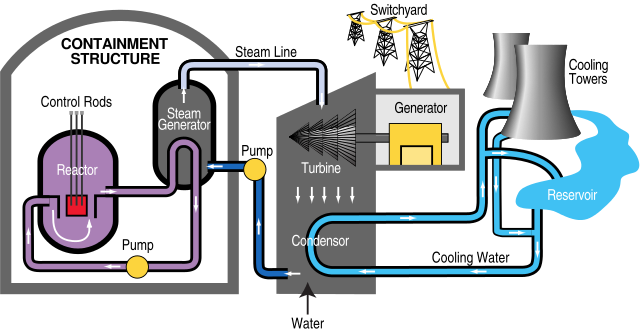
Nuclear energy advantages and disadvantages
Scientists who encourage nuclear energy claim that it is a clean, competitive, reliable, and most of all a safe energy source. Some of the most principal benefits are the capacity of nuclear energy to be sustainable, ecological, and independent. In terms of being sustainable, nuclear energy reduces dependency on foreign energy resources and it causes less pollution compared to other types of energy sources. In addition, it is considered as a powerful and efficient source for energy compared to its alternatives.
However, there are many different opinions regarding the advantages and disadvantages of the nuclear energy, these opinions are made by scientists, politicians, and people. One of the main reasons it is considered a great source for power is the massive amount of energy that nuclear power can produce. Nonetheless, people are still skeptical of its usefulness due to the fact that it is considered dangerous by many.
Main advantages of nuclear energy
Nuclear power is reliable. It is projected that we have enough uranium for around 70 or 80 years, and nuclear plants can work without being affected by the climate conditions unlike other renewable sources such as solar systems and wind turbines.
Endless supply, nuclear energy has a good economic impact in terms of being extensively available and having endless supply while other natural energy sources are expected to vanish with time.
High energy density, a small amount of fuel is needed in nuclear power plant, because the sum of energy liberated in a nuclear fission reaction is ten million times greater than the amount liberated in burning a fossil fuel atom.
Low operating costs, nuclear energy creates cheap electricity due to the fact that uranium is not expensive. Though, building the nuclear plant can be very expensive. However, the cost of running it is low and it can survive 40 to 60 years of usage, therefore the electricity its producing is considered inexpensive.
Low pollution, nuclear energy does not release to the atmosphere any gases that can cause pollution or damage the nature.
Renewable, even though the neutron is not renewable and cannot be re-sliced in any way, the fact that a small amount of it can produce massive amounts of energy still incredible. In addition to that if we knew how to control fusion atoms we could have created an endless, 100% renewable energy.
Main disadvantages of nuclear energy
Environmental impact, the fuel that is used during the transportation process becomes radioactive, dangerous and hard to get rid of. This leads to the chemical waste disposal problem that is not satisfactorily solved yet. Radioactive waste takes decades to be molder, and should be carefully looked after for thousands of years. ‘According to the United States Environmental Protection organization standards, the longest-lived waste last for 10’000 years.’ (U.S. energy information administration , 2016) However, scientists seem to be working on this issue and they are claiming that the results so far are promising. Yet what they are promising is to decays to the safe levels in hundreds of years instead of thousands.
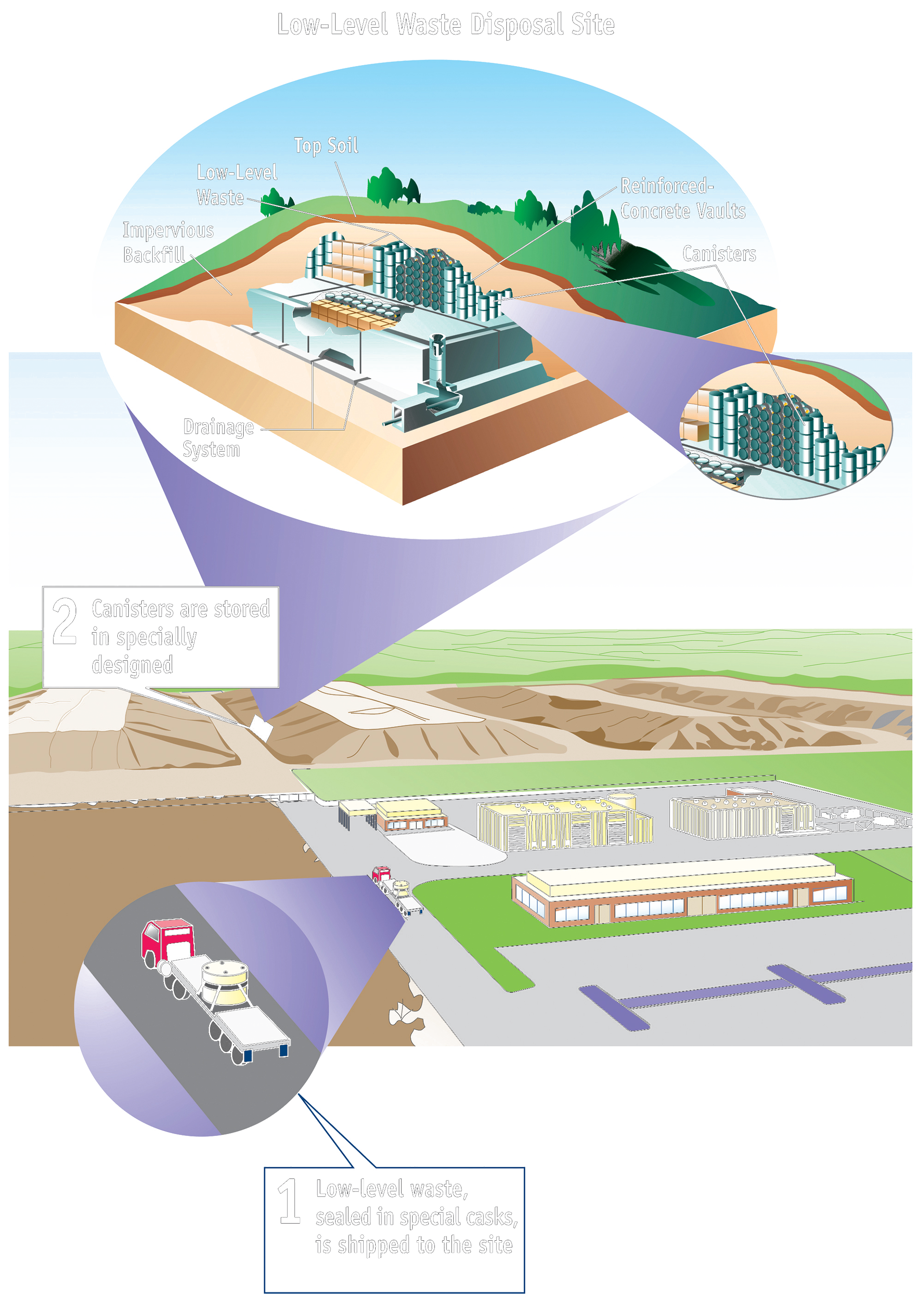
The danger of accidents, Germany have closed all nuclear plants in the country due to the safety issues, as there have been several accidents around the world. For example, Ukraine in 1996, when the nuclear reactor exploded due to the cheap structure and poor thinking of safety. This accident is considered the worst nuclear accident in history, it caused 32 deaths during the explosion and several more due to cancer from exposure to radiation. Unfortunately, it happened again in Japan in 2011 when an earthquake caused the tsunami which destroyed part of the Fucushima nuclear plant causing an explosion that spread radiation all over the area. However, in another point of view, nuclear plants caused fewer deaths than fossil plants, actually it saved 1.8 million lives which could have been the coast of having fossil plants instead of nuclear ones.
High cost, the nuclear plants are very expensive to build and need a long time and massive amounts of structure supplies which seems to be inconvenience for 60 years of usage. In fact, lots of the nuclear plants have been abandoned before they are finished because they turned to be not cost effective. The high cost will remain a big concern unless the cost of built will be reduced with advanced designs.
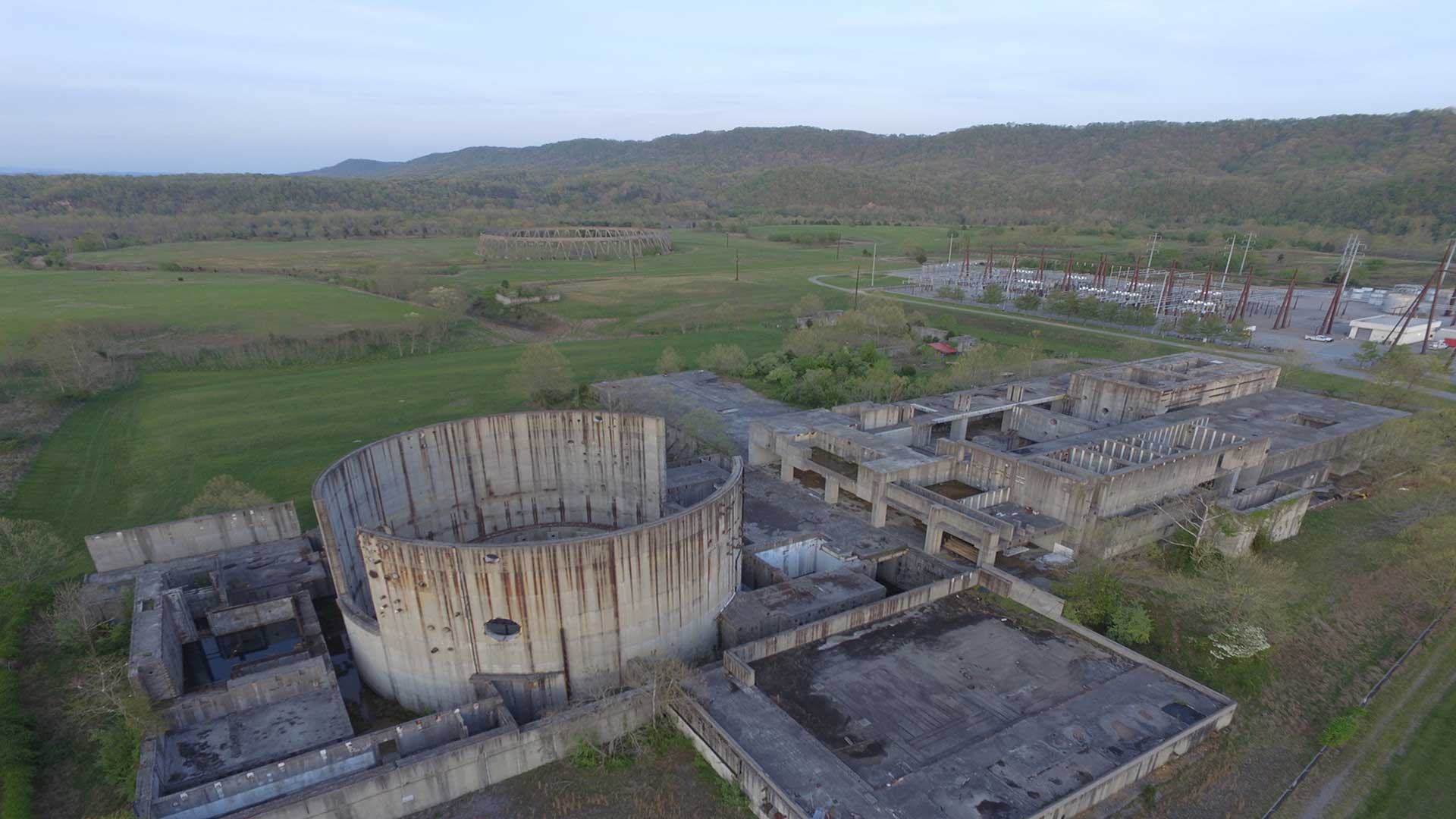
Indicators of success
There are several examples of using the nuclear energy around the world, in order to save energy and to make cities more sustainable by finding an endless source for renewable energy. One of the most reliable countries which has been using nuclear power is the United States of America where the second most common source for energy is nuclear power, as 25% of USA electricity comes from the splitting atoms. This power was expected to be the most common one in USA. and the golden saviour with time. The average age of a nuclear reactor in USA is 35 years. The oldest working reactors are Oyster Creek in New Jersey, and Nine Mile Point 1 in New York Both reactors entered service in 1969, the last newly built reactor (Tennessee’s Watts Bar 1) is in service since 1996.
Canada is also trying to become more sustainable by relying on nuclear energy. They even have their own famous design for nuclear plant (Canada Deuterium-Uranium Reactors (CANDU)) which is found in Canada and around the world. “They contain heavy water, where the Hydrogen in H2O has an extra neutron (making it Deuterium instead of Hydrogen). Deuterium absorbs many fewer neutrons than Hydrogen, and CANDUs can operate using only natural uranium instead of enriched.” (Nick Touran, 2016) This design like any other design has its pros and cons, it is good in terms of using small amounts of uranium, being flexible as any type of fuel can be used, and can be re-supplied. While it is bad in terms of safety, radioactive leaks, theoretically able to produce atomic bombs faster than other nuclear reactors.
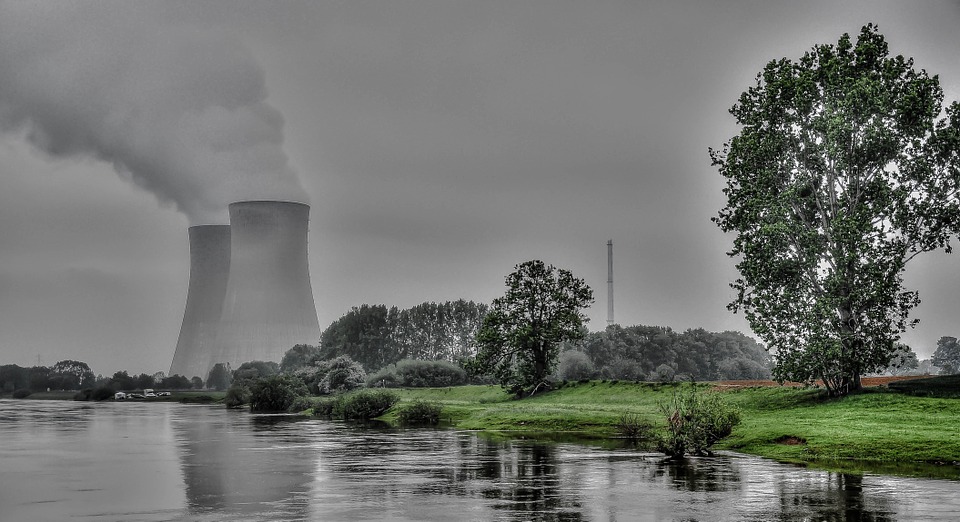
Conclusion
As a conclusion I understand that the idea of nuclear energy sounds dangerous and very scary in terms of safety, radiation, and accident cases. However, in my point of view if scientists could with time provide more reliable terms of safety and accident-free solutions, in addition of finding real keys for the waste problems, the nuclear power is a very trustworthy source for energy.
Also, it will be significant if they could bring fusion reactions to work as it will be the greatest energy source if achieved. Although, it cannot be achieved by scientists by their own, people around the world should encourage this researches instead of criticizing them, as it will make a big deference in order of saving our planet and energy for those generations to come. With a look in to the future where there is safe nuclear power I can imagine a cleaner atmosphere and more sustainable cities in many ways. For intense, a clean transport where most of the electrical cars and trains could be depended on nuclear energy. It can also be used for running all the factories around the world which will reduce the pollution caused by the burning coal. Moreover, it is a good practice and it deserves the chance to proof its sustainability.
References
Anon., n.d. Brainy quote. [Online] Available at: www.brainyquote.com
conserve energy future, n.d. nuclear energy. [Online] Available at: www.conserve-energy-future.com
John Blunden, A. R., 1996. Energy, Resources and Environment. 2nd edition ed. London: The open university.
Maehlum, M. A., 2013. Nuclear Energy Pros and Cons. [Online] Available at: energyinformative.org
Nick Touran, 2016. Whatisnuclear.com. [Online] Available at: whatisnuclear.com
U.S. energy information administration , 2016. eia. [Online] Available at: www.eia.gov
U.S. energy information administration, 2016. eia. [Online] Available at: www.eia.gov
